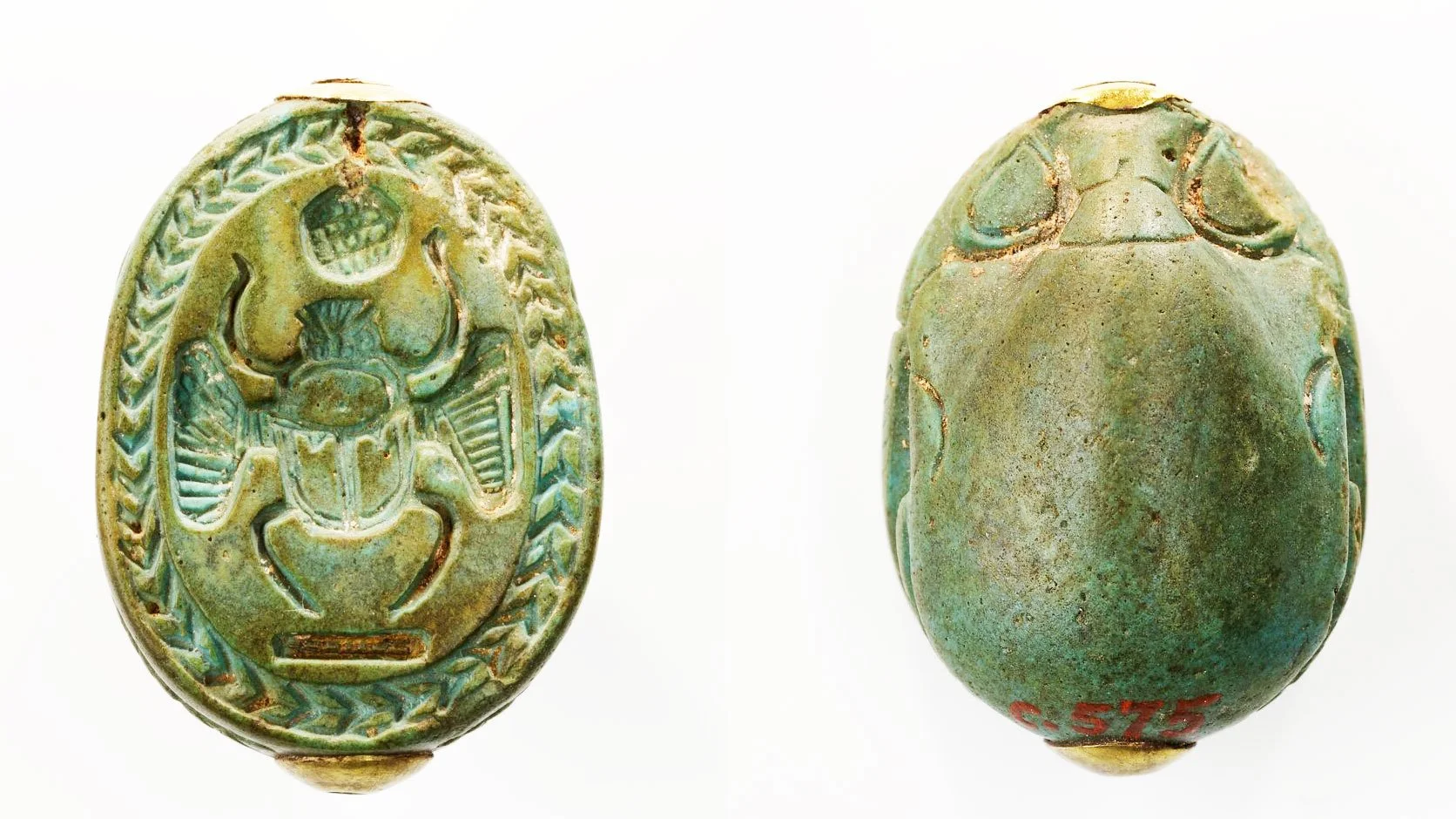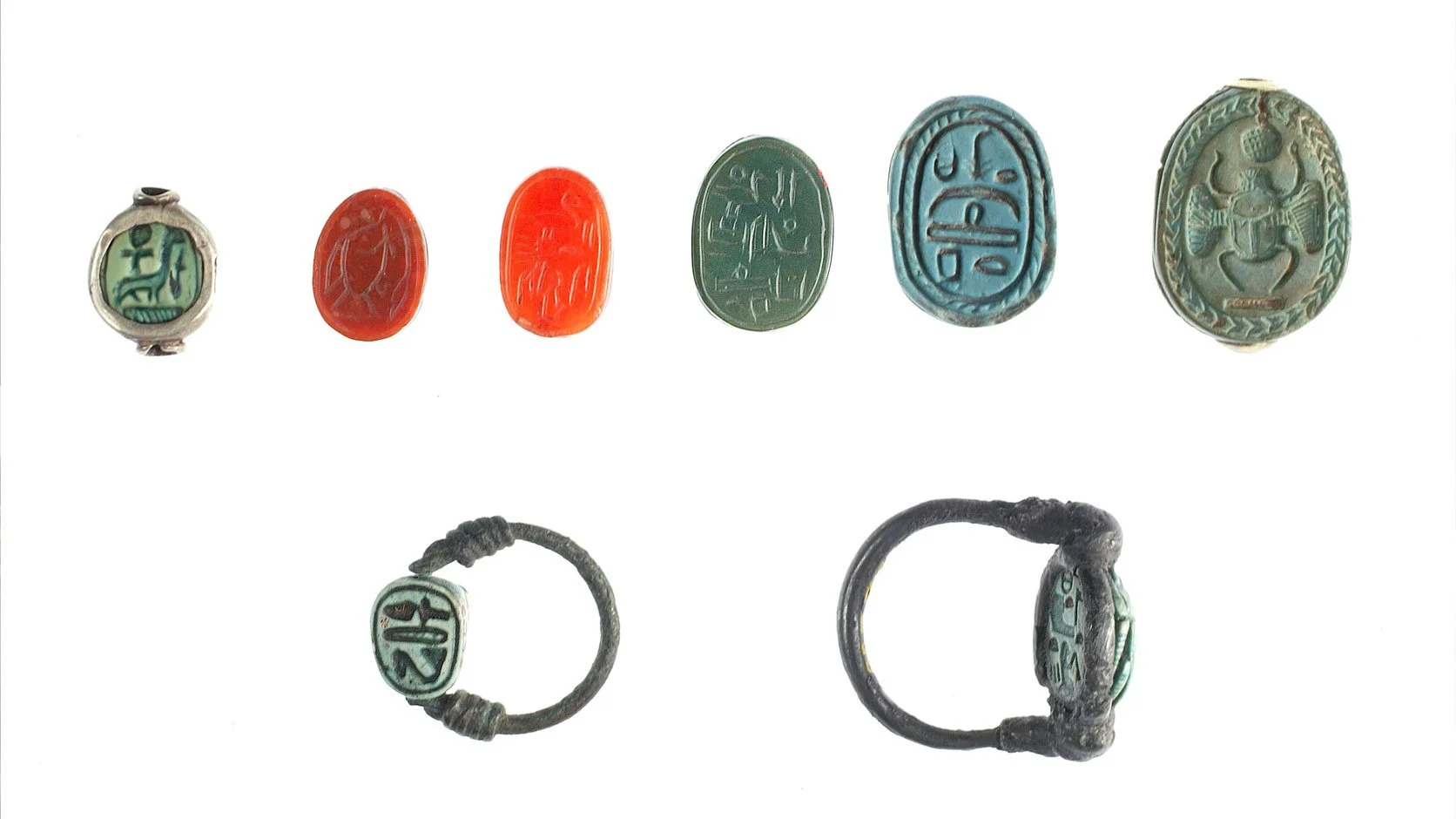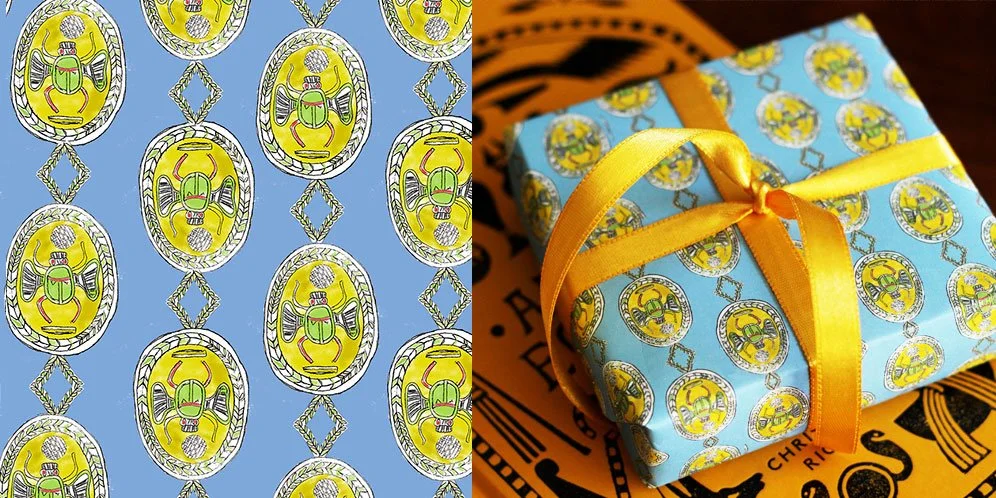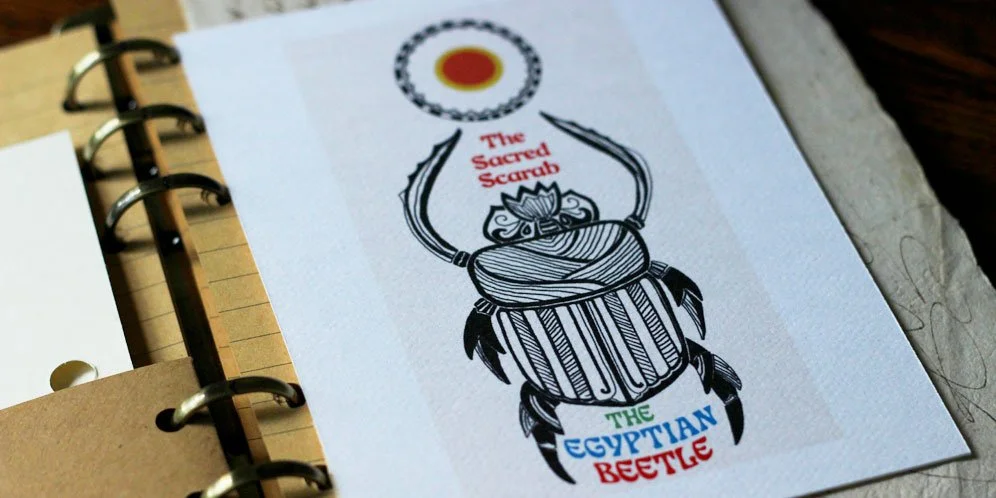The Ancient Egyptian Scarab
Scarabs are almost shorthand for ancient Egypt so ubiquitous are they in movies and books about that far gone time.
Of course, there is a reason for that. Scarabs are beautiful in a mysterious sort of way - evoking ancient rites and travel to the afterlife.
This blue-green and gold scarab carving comes from the Metropolitan Museum of Art, and shows a border pattern of rope that was used from the middle kingdom through to the 18th dynasty, from which this piece comes.
Scarab Seals & Amulets
In ancient Egypt, scarabs were among the most common amulets and personal seals. Made of stone, faience, or precious materials, they were carved in the shape of a beetle on one side and inscribed with names, prayers, or protective formulas on the flat underside.
These were often used as personal seals, pressed into clay or wax to secure documents and goods, and as charms placed among the wrappings of the dead to safeguard the soul in the afterlife. The so-called “heart scarab” was especially important, inscribed with spells from the Book of the Dead to ensure the deceased’s heart did not testify against them in the judgment of Osiris.
Scarabs made into rings...
The Egyptians were fond of their jewelry, and had no desire to leave it behind.
The Winged Scarab of the main photo is from approximately 1550-1479 B.C. and was found in a coffin. Above are shown scarab amulets and rings. Amulets were often tucked in between the linen strips used for mummification.
Symbolism
The scarab represented renewal, rebirth, and the eternal cycle of life. This symbolism came from the observed behavior of the dung beetle, which rolls a ball of dung across the ground and lays its eggs within it.
To the Egyptians, this mirrored the daily journey of the sun across the sky, renewed each morning. The scarab thus became linked with the sun god Ra (in his form as Khepri, the rising sun), embodying the ideas of creation, transformation, and protection.
The Actual Beetle
The scarab amulets were modeled on the Scarabaeus sacer, a type of dung beetle found along the Nile. Egyptians noticed how the beetle shaped and pushed its ball of dung across the sand with tireless determination, and how new life (the beetle larvae) emerged from what appeared lifeless.
This natural wonder gave the insect a divine, cosmic role as a symbol of life emerging from death, making it one of the most powerful and enduring emblems in Egyptian religion and art.
Put into Use…Pattern
Going back to the first photo with the scarab encircled in a rope pattern. This design is classical in style and looks very much like a ring of laurel leaves. I can almost see it on a coin with the head of Caesar in the middle.
I also imagined it turned into a stylized pattern using the whole design.
I tried this and what resulted was something akin to Ancient Egypt meets Regency meets vintage Versace shirt. To make it useful, I printed some gift wrap on a plain 8.5x11 sheet. It works great for small packages.
In Clay…
I’m just at the very end of a beginning pottery class and next week I will take five or six little scarab amulets I’ve carved and have them glazed and fired. They are going to make excellent little fridge magnets. I’ve done a large one for a paperweight as well.
I’ll post photos if they come out.
In the meantime, I leave with this - an image of the Sacred Scarab I’ve done to add to my growing collection of Egyptian deities and symbol illustrations.




